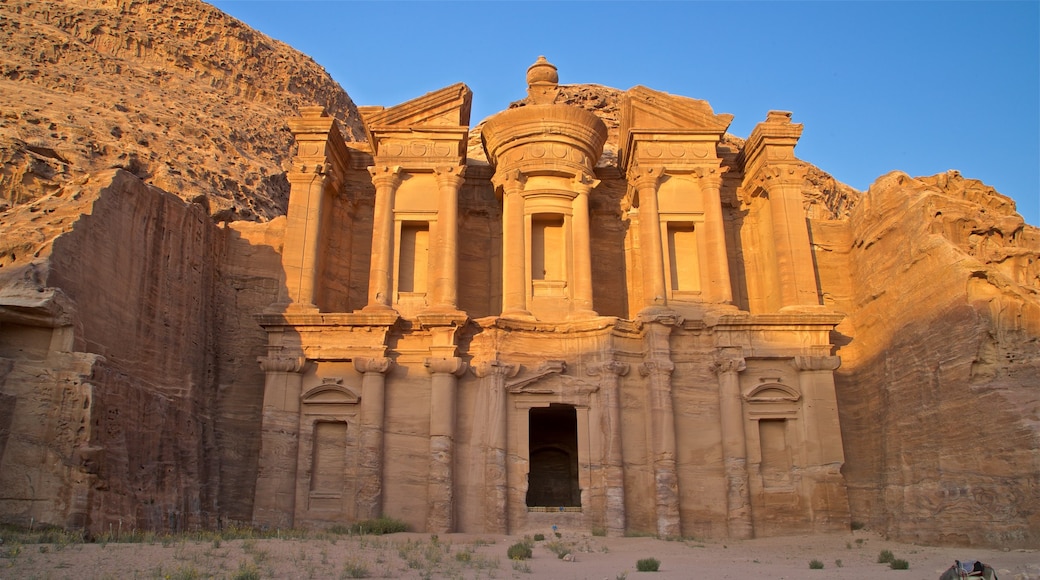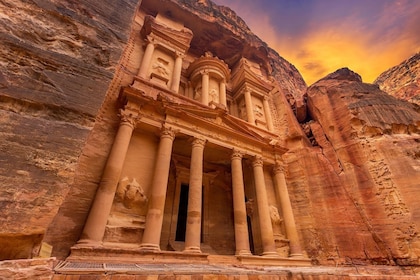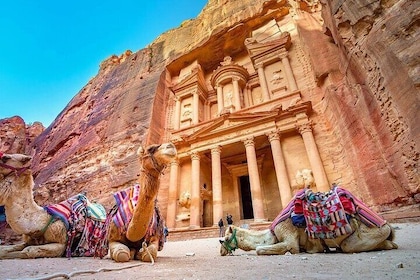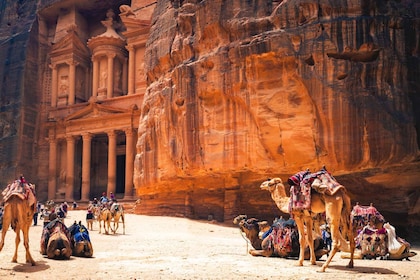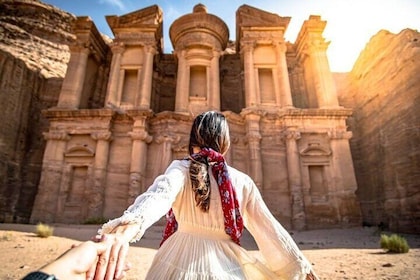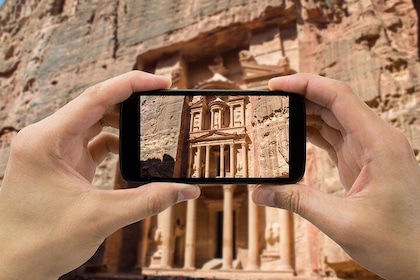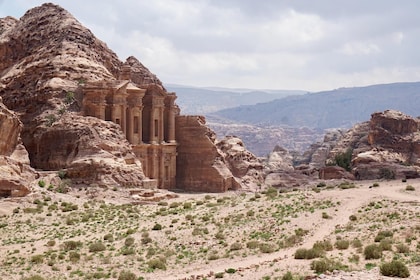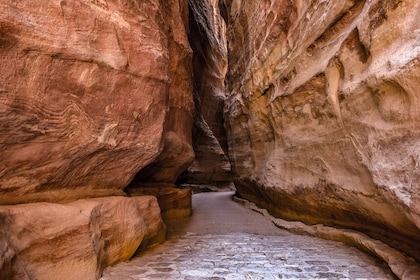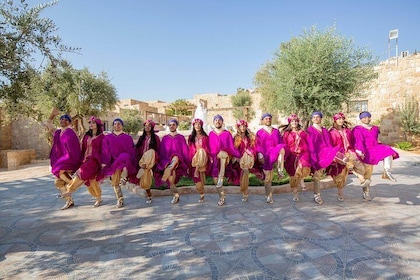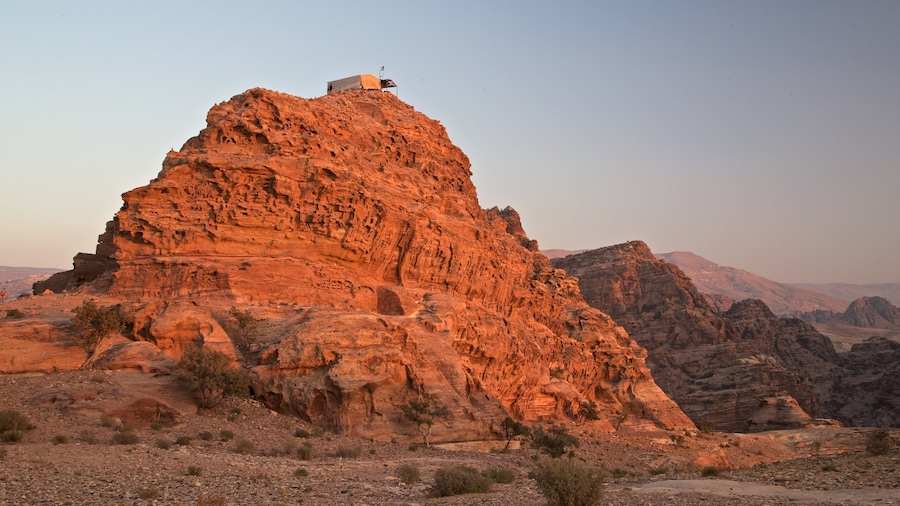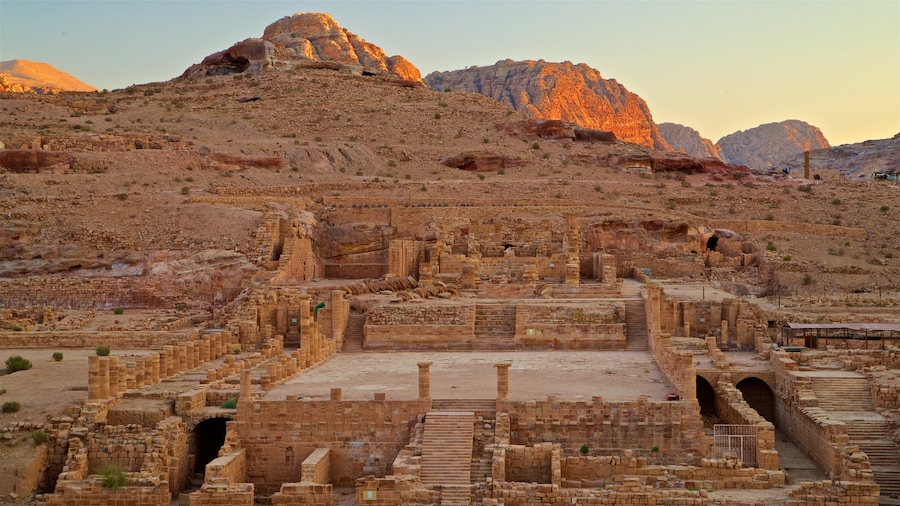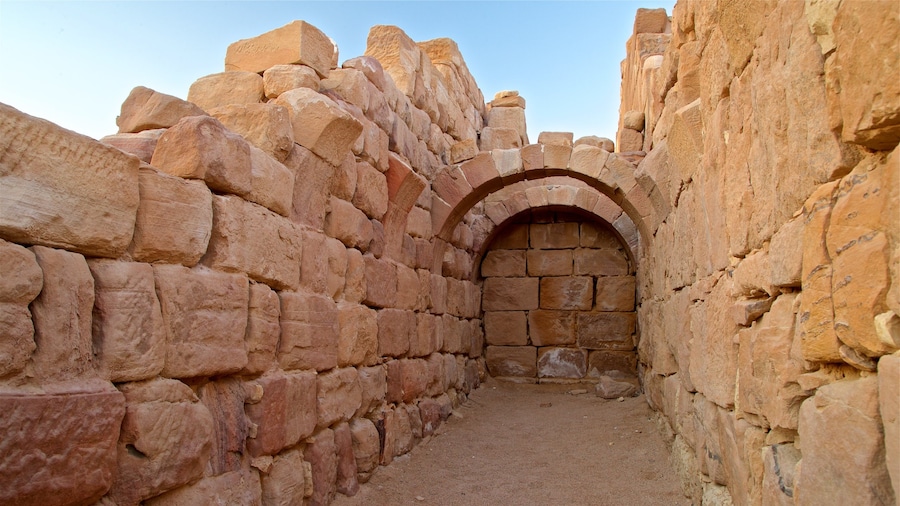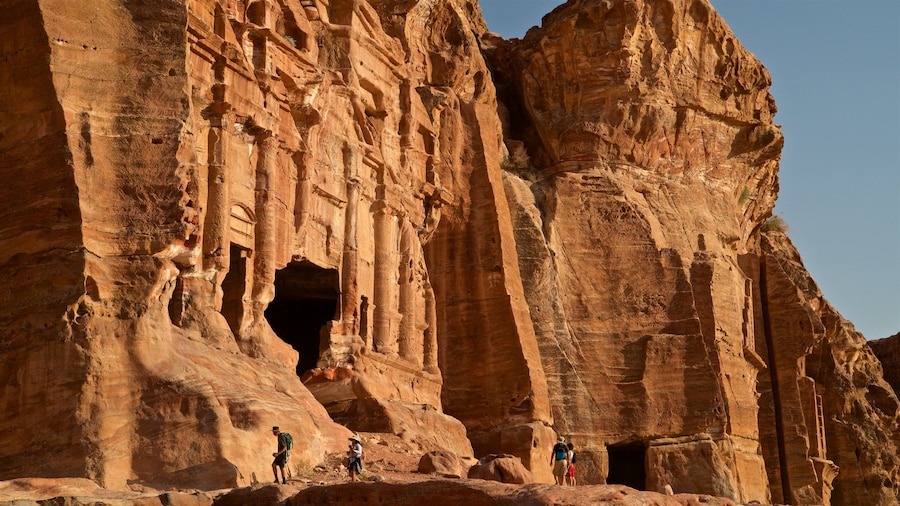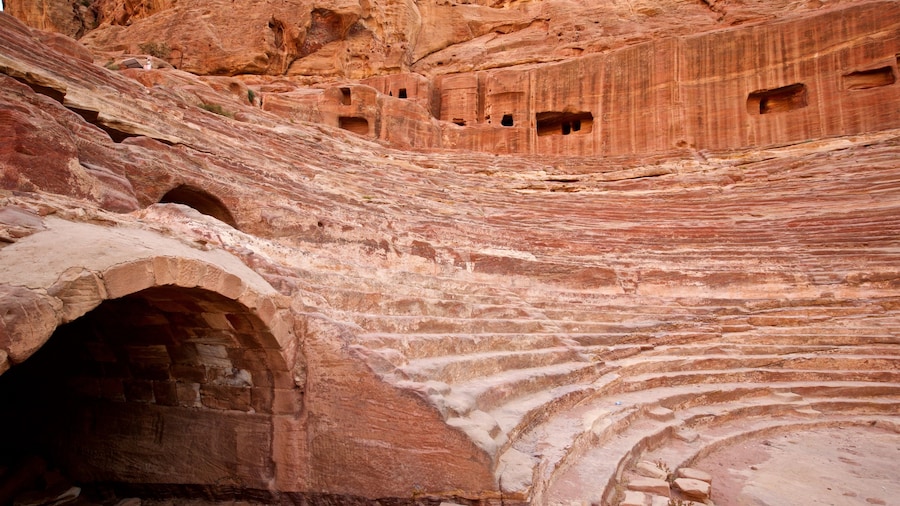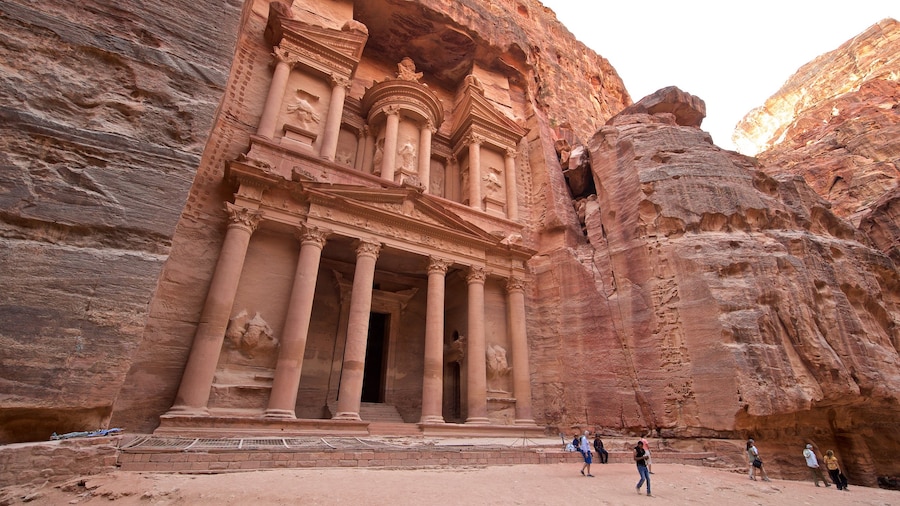No visit to Petra is complete without seeing al-Deir, the monumental church carved out of rocks, although you have to climb up 850 steps to see it.
After al-Khazneh (The Treasury), al-Deir (The Monastery) is one of the most visited structures in the “Lost City” of Petra, despite its remote location. Climb the 850 rocky steps up to see The Monastery for yourself. It’s a big ask on a hot summer’s day, but well worth the effort. As you ascend, turn around regularly to look down towards the main basin in the canyon.
If you are not able to hike up, you can negotiate a guided donkey ride. Not all donkeys are treated very well, so choose your guide carefully and be aware that the journey down the steep steps can be a bit scary.
When the Nabateans carved The Monastery out of the sandstone rock face, the Hellenistic architecture was prevalent in Europe, spilling over into the Middle East. This explains why tall Greek-style Doric and Corinthian columns and windows decorate the façade, instead of Arab ornamentation.
Standing in front of The Monastery, you may feel a little dwarfed. The carved façade is about 150 feet (48 meters) high. Inside, there is not much to see in the ancient hall other than the impressive rock ceiling with its whirling shapes.
As is clear from its ornate exterior, the monastery played a major role in the ancient Arab Nabatean Kingdom and is believed to have been a church in Byzantine times, judging by the crosses carved in the interior walls.
After seeing The Monastery up close, climb up the hill opposite the structure to admire the monastery from above as it blends in with the conical mountain peak around it.
The path to The Monastery starts at the Basin Restaurant in the archeological site of Petra and is easy to find. Allow at least 2 hours for the return trip, including plenty of time to rest and see The Monastery. Bring plenty of water to stay hydrated and catch your breath on a shaded bench in one of the carved-out shelters in the rock face. There is a little café with a cool cave lined with carpets and seating cushions in the former Monastery courtyard at the top. You can also buy tea from bedouin sellers along the way.
